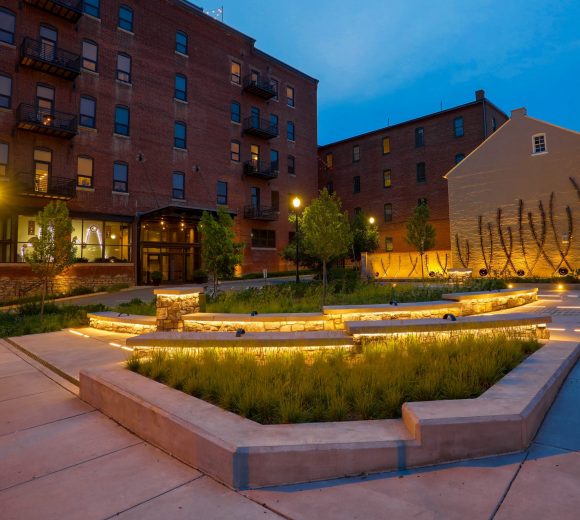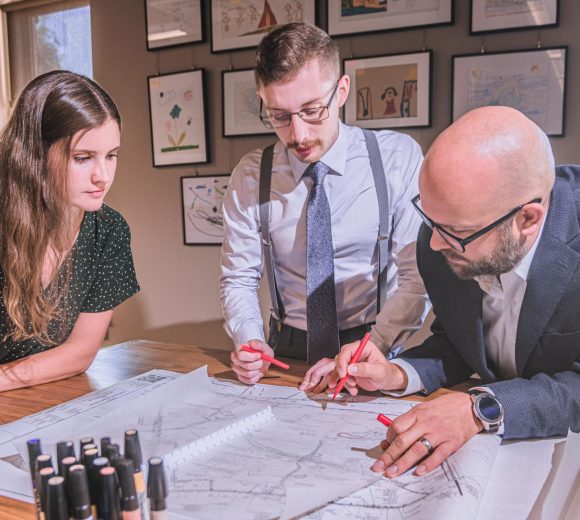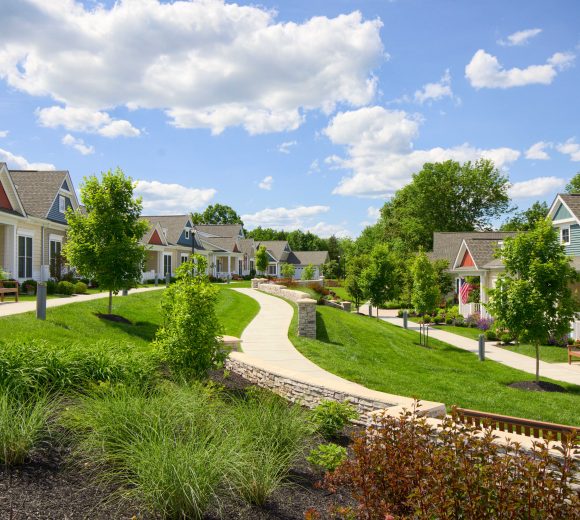Multiple Design Objectives to Improve Water Quality and Quality of Life
Visionary leaders from the Community Mennonite Church of Lancaster, Lancaster City staff, and RGS Associates worked to meet the parking needs of congregants and neighbors while adding new green infrastructure within a redesigned church parking lot.
The Community Mennonite Church of Lancaster and City staff established specific goals for the joint project. The church required that none of its existing parking spaces be lost. Both groups required that the project enhance the surrounding neighborhood and provide an outdoor learning area where the science and process of creative stormwater solutions could be taught. The City agreed to fund 90% of green infrastructure costs if planned site improvements could also reduce neighborhood flooding, improve water quality, and actively engage the local community. They could, and they did.
Layered Spiritual, Social, and Environmental Benefits Within a Tight Urban Site
RGS Associates’ landscape architects and civil engineers contacted CMCL’s upstream neighbors to observe roof drainage from their fenced yards, most of which discharged toward the church’s parking lot. To retain the required number of parking spaces while adding new plantings, CMCL decided to remove the rear portion of a vacant building on its campus and repurpose the structure’s salvaged materials. Following greener parking area construction by local contractors, stormwater infiltration was also increased.
Healthy, Beautiful Results for the Congregation and its Surrounding Neighbors
Today, 87.9% of yearly rainfall is prevented from entering the City’s combined sewer system. Runoff is filtered via CMCL’s carefully tended plantings which also provide a seasonal succession of landscape interest for neighbors.
Instead of piping stormwater to the Conestoga River and the downstream Chesapeake Bay, polluted runoff from surrounding rooftops and pavement is now filtered by indigenous plantings and allowed to naturally infiltrate beneath terraced rain gardens and porous paving.
Prior to this redesign, there was a significant deficit of neighborhood green spaces and parking spaces. Initially, some curious neighbors were skeptical of proposed changes, but many now proudly consider the greener parking area as a park-like community space.








